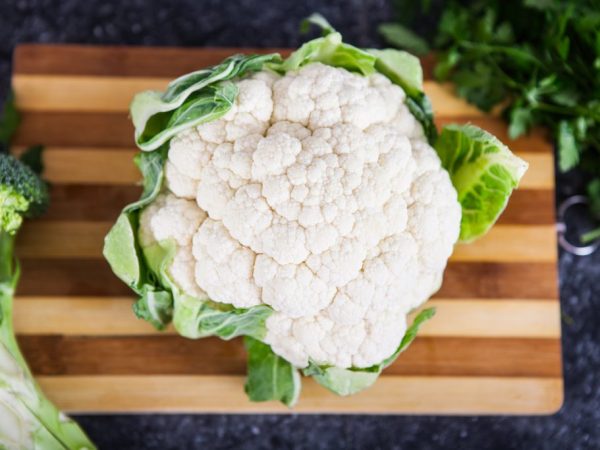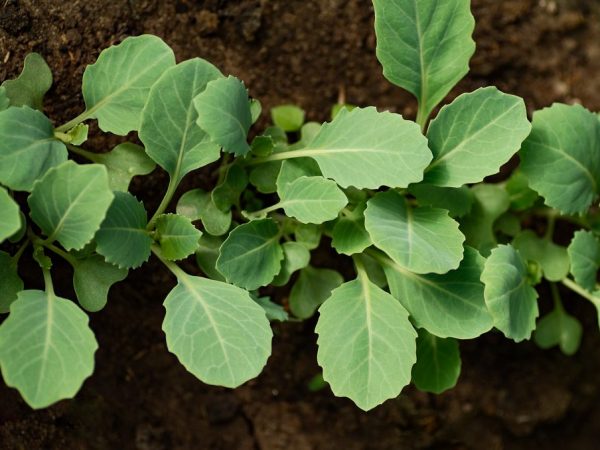Cauliflower variety Dachnitsa
Cauliflower Dachnitsa is a popular variety of cauliflower. The variety is unpretentious in cultivation, high-yielding. We will consider a detailed description of the variety in the article.

Cauliflower variety Dachnitsa
Characteristics of the variety
Summer resident is a variety of the middle ripeness period. It is characterized by a long (compared to other types of cauliflower) growing season - at least 80 days pass from the emergence of sprouts to full ripening, and sometimes this period can reach 100 days.
Among the characteristics of the variety, a number of advantages can be distinguished:
- Versatility - the variety is not whimsical to the type of soil and climatic conditions, the Summer resident feels equally well both in greenhouse conditions and in the open field.
- Stress resistance - the variety is not afraid of both short droughts and light frosts. Resistant to average daily temperature drops.
- It has good consumer qualities - it contains a number of useful substances, is versatile in preparation and is well preserved.
Description of the head
Cauliflower variety Dachnitsa has a very dense, slightly flattened round head, white, with a slight creamy tint, the head of the plant has a fine-grained structure. The weight of the head reaches from 400 to 800 g.
The rosette consists of medium-sized leaves, rarely large ones. The leaves in the rosette are smooth, green in color, have a slightly folded surface, with a slight waxy bloom.
Application of the vegetable
The range of application of cauliflower, in particular the Dachnitsa variety, is very wide. Recommended for most types of cooking. A feature of the variety is the long preservation of the head in frozen form, while the taste and benefits of the vegetable are not lost at all.
Unlike white cabbage, cauliflower is many times richer in vitamins and microelements. There is less fiber in cauliflower - so it is easier to digest. A summer resident is an excellent universal product that is healthy and dietary.
Growing and care
To achieve high yields, it is necessary to provide proper conditions both when growing seedlings and when caring for mature plants. In general, the care description is the same as for other cauliflower varieties.
Planting seedlings

Maintain the optimum temperature for the plants
The cultivation of the variety for most regions is carried out using seedling technology. Planting seeds for seedlings is carried out in the last decade of March - early April. Since the plant forms an inflorescence already at the seedling stage, a mandatory factor is to maintain the room temperature at a level of at least 20 ° C, otherwise the sprouts will be delayed in development. In 7-9 days after germination, young shoots dive. Plants ready for planting should get stronger and harden, for the Dachnitsa this happens on average in 30-35 days.
Disembarkation
Landing in the ground at the place of permanent explantation is carried out according to the scheme 50x35 cm.14-16 days after planting, it is imperative to make the first hilling using wet soil.
Watering
Regularly you need to water the plants using only warm water, but in moderation, since young seedlings do not tolerate an excess of moisture. When the plants get stronger and mature, the amount of moisture must be increased - the more the cauliflower receives moisture, the faster the growth of the useful head mass occurs. Two to three weeks before collecting the heads, it is necessary to limit the frequency of watering. A week before harvesting, watering is stopped altogether.
Top dressing
To achieve good yields, it is recommended to use organic fertilizing. Active growth and formation of the ovary begins precisely after fertilization. Usually 2 or 3 dressings are made. The first must be done 10-14 days after disembarking to a permanent place, the subsequent ones are carried out with an interval of two weeks.
At the first stages of growth, ammonium nitrate is used as top dressing (5 grams per square meter of planting), then superphosphate and potassium sulfate are used (from 4 to 7 g / m2). At the final stage of growing, top dressing must be balanced.
Pests and diseases
Phyto-pests that can infect a culture:
- spring cabbage fly, whitefish, scoop :. a solution of dust is used to combat, and for prevention, the soil around the roots of plants is sprinkled with sand with naphthalene;
- aphids: to exterminate the pest, an ash broth is used, preferably tobacco ash, Fitoverm is also effective;
- gray slug: tobacco ash or ash is also used as a prophylaxis - the pungent smell scares off the pest;
- wireworm (click beetle): this parasite is the larva of a click beetle, rather quickly devours the leaves and the head of the plant. Frequent and intensive weeding of the soil will help to get rid of the larvae, in which a large number of larvae die.
The variety is quite resistant to diseases, but the following can be distinguished to which the plant can be exposed:
- black leg - when a disease appears, the affected plant must be removed from the garden, and watering of neighboring plants must be limited;
- keela, fusarium - the plant must be destroyed; as a preventive measure, you can treat the soil with a formalin solution.
Conclusion
The variety is popular among gardeners, as it is very convenient for growing in small quantities, and does not require careful maintenance throughout the entire growing period.


